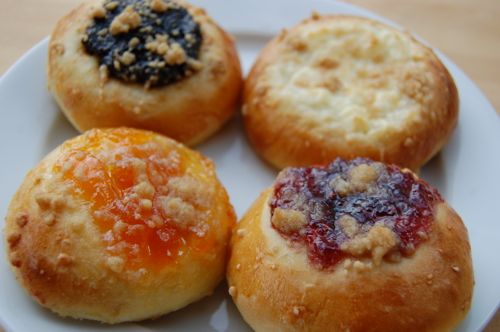Category: Pastry
Come for dinner, stay for the show.
There are lots of edible birds in the world. Ducks spring to mind. Geese are another. But really I can’t think of any birds you can’t eat. I can think of plenty of birds I’d just as soon not eat, but none that would, say, poison me in the event I needed to eat one in a pinch. But of all those edible birds — especially the really, really toothsome ones — why have we humans elevated chickens above all other possible choices? A big part of the answer is cockfighting.
READ ONThe Long (Chicken) Walk
It took a surprisingly long time for chickens to make it from the region we now know as Thailand to the Western World. Thousands of years in fact. Though some historians dispute this (of course), most evidence suggests that chickens didn’t arrive in the Middle East/Mediterranean until about 500 BC, some 7,000 years after they were first domesticated.
It was the Persians under Darius the Great who first “discovered” the chicken for the West when he invaded what is now Pakistan in 520 BC. Long time readers may remember Darius as the man who lost to the Greeks at the Battle of Marathon during the first of the Greco-Persian Wars.
READ ONWhere do chickens come from?
Is that a trick question, reader Hanna? Because I’ve been down that road before. The whole chicken-egg thing only ends in headache and frustration. But if you want to know where — geographically — chickens come from, the answer is Thailand (or thereabouts). That’s where they were originally domesticated, sometime around 7500 BC.
Chickens are descended from junglefowl, medium-sized ground-dwelling creatures related to pheasants, which inhabit open spots in jungles and forest edges in southeast Asia. That’s about as specific as I can get without inciting argument. For chickens, it turns out, are a highly contentious subject.
READ ONWhy should I roast a chicken in a crust?
…asks reader Owen — he has a perfectly good roasting pan! That’s a good question. The answer is because, other than being kinda cool, it provides a different flavor and texture compared to conventional roasting. A chicken baked in a salt crust is essentially steamed, which means the meat has a very tender and succulent quality. The salt in the crust also steadily seasons the meat during roasting. It doesn’t season the meat as thoroughly as as a brine will, but it’s a noticeable improvement over standard roasting. Plus maybe not everybody out there has a good roasting pan, Owen! A salt crust gives you a way to roast if all you have in your kitchen is a cookie sheet.
READ ONNext Up: Roast Chicken in a Salt Crust
Here’s something that’s well outside of what I normally do — and thank goodness because I sorely need a change of pace. Although thinking about it, this technique has a lot more in common with pastry than it does with, say, grilling. Technically speaking, it’s in the same spirit as Medieval pie bakery, which I’ll get into a little later. For now let’s get to the recipe. You’ll need:
1 large, 4-6 pound roasting chicken
1 medium onion
1 lemon
2-3 springs rosemary
2-3 sprigs parsley
2-3 springs thyme
2 bay leaves
3 cloves garlic
Arr Yoo Tee
Spells rut. Much as I loved those kolache last week, I feel like I’m in a big-time rut. I’m getting bored with so much sweet baking. I start every calendar year pledging to do more savory stuff, but always seem to get distracted with more and more sweets. So here’s my new pledge: this year I’m going to spend the dog days of summer doing nothing but savory projects. Ready?
READ ONMaking Kolacky

I been makin’ kolatch-kee for forty five years…was the mad refrain of a retired ninety-something baker who lived next door to a high school buddy of mine. Back then, as a cocky teenager hanging around in Riverside, Illinois, I thought it was pathetic. Nowadays I can imagine many far less pleasant things to have spinning around in my senile old brain. As a middle-aged man who appreciates a good kolache, I look back on that guy as sorta lucky. I don’t know what he would have thought of these. My guess is he’d have taken one look, waved his hand dismissively and walked the other way. That’s what makes guys like that great.
READ ONPrune Filling

Another fantastic kolache filling that works just as well in Danishes. Funny how that works, isn’t it? You need:
2 cups dried prunes
water or prune juice to cover
2 tablespoons sugar
1 tablespoon lemon juice
zest of 1/2 lemon
1/2 teaspoon ground cinnamon
pinch ground cloves